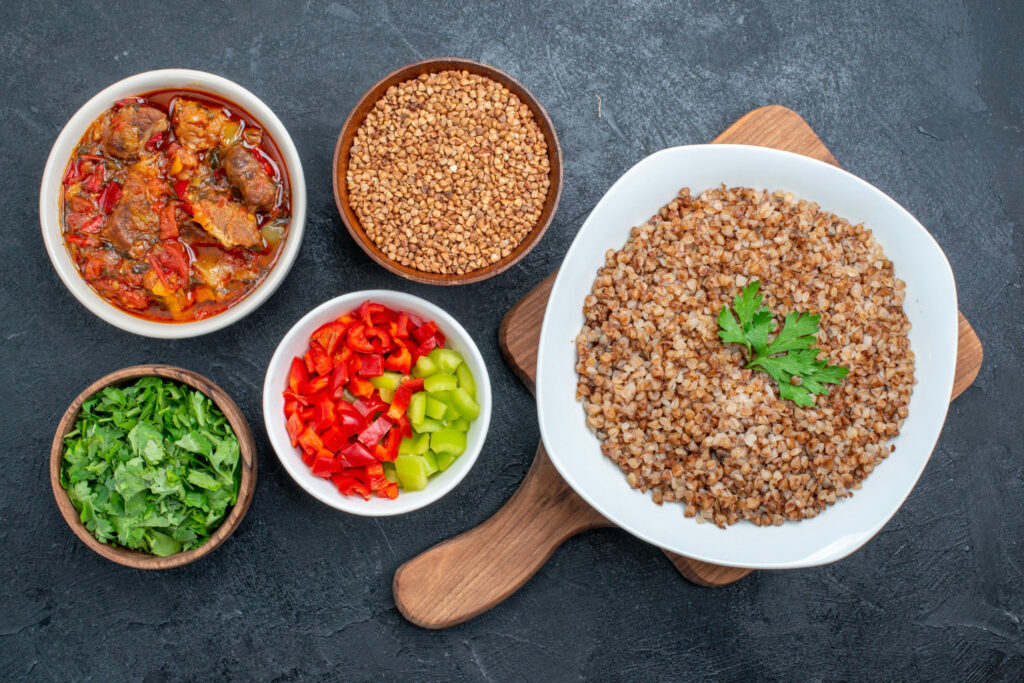
In this article
overview
In today’s health-conscious world, protein is often the star of the nutritional show. Whether you’re a fitness enthusiast, following a plant-based diet, or simply looking to boost your nutrient intake, protein is a key component of a balanced diet. While meat, dairy, and legumes are well-known sources of protein, many grains are also packed with this essential nutrient. This blog post explores some of the best high-protein grains you can incorporate into your diet to enjoy a delicious, varied, and protein-rich menu.
Why Is Protein Important?
Before diving into the types of grains, it’s important to understand why protein is so crucial. Protein is a macronutrient that plays a vital role in building and repairing tissues, making enzymes, hormones, and other body chemicals. It’s a building block of bones, muscles, cartilage, skin, and blood. Protein is also an important part of the processes that fuel your energy and carry oxygen throughout your body in your blood. A diet rich in protein helps maintain muscle mass, promotes a feeling of fullness, and supports weight management
High-Protein Grains to Add to Your Diet
1. Quinoa
Quinoa, often referred to as a “supergrain,” is one of the most popular high-protein grains available. It is a complete protein, meaning it contains all nine essential amino acids that our bodies cannot produce. Just one cup of cooked quinoa offers about 8 grams of protein, making it an excellent choice for vegetarians, vegans, and those seeking a gluten-free option. Beyond its protein content, quinoa is rich in fiber, iron, magnesium, and antioxidants, contributing to overall health and wellness.
How to Use: Quinoa is incredibly versatile. It can be served as a side dish, used in salads, or even as a breakfast porridge topped with fruits and nuts. You can also incorporate quinoa into soups and stews for added texture and nutrition.
2. Amaranth
Amaranth is another ancient grain known for its impressive protein content. Like quinoa, it is a complete protein, providing about 9 grams of protein per cooked cup. Amaranth is also rich in fiber, which supports digestion, and contains important minerals like calcium, iron, and magnesium.
How to Use: Amaranth has a slightly nutty flavor, making it ideal for porridge, pilafs, and even baked goods. It can be cooked similarly to quinoa and used in various dishes to enhance their nutritional value.
3. Teff
Teff, a tiny grain native to Ethiopia, is small in size but mighty in nutrition. With about 10 grams of protein per cooked cup, teff is an excellent choice for those looking to boost their protein intake. Additionally, teff is high in calcium, iron, and resistant starch, which can aid in weight management and blood sugar control.
How to Use: Teff is commonly used to make injera, a traditional Ethiopian flatbread. However, you can also use it as a base for porridge, add it to soups, or mix it into batter for pancakes and waffles.
4. Farro
Farro is an ancient wheat grain that has been a staple in the Mediterranean diet for centuries. It offers around 6 grams of protein per cooked cup and is also high in fiber, magnesium, and zinc. Farro has a hearty texture and a nutty flavor, making it a satisfying addition to any meal.
How to Use: Farro can be used in salads, soups, and grain bowls. It’s also a great substitute for rice or pasta, offering a more nutritious alternative with added protein and fiber.
5. Millet
Millet is a versatile grain that is high in protein and naturally gluten-free. One cup of cooked millet provides about 6 grams of protein, along with essential minerals like magnesium, phosphorus, and manganese. Millet has a mild flavor, making it a great addition to both sweet and savory dishes.
How to Use: Millet can be used to make porridge, pilafs, and even as a base for salads. It’s also great for baking and can be used to make gluten-free bread, muffins, and other baked goods.
6. Spelt
Spelt, an ancient relative of modern wheat, is another grain that deserves a place in your pantry. Spelt provides about 6 grams of protein per cooked cup and is rich in fiber, iron, and manganese. While it contains gluten, spelt is often easier to digest than modern wheat and can be a good alternative for those with mild gluten sensitivities.
How to Use: Spelt can be used in a variety of dishes, from salads and soups to bread and baked goods. You can also use spelt flour to make pasta, pancakes, and other recipes that require a hearty, nutty flavor.
Benefits of High-Protein Grains
Incorporating high-protein grains into your diet offers numerous benefits:
- Muscle Health: Protein is essential for muscle repair and growth, making these grains particularly valuable for active individuals.
- Satiety: High-protein foods help you feel fuller for longer, which can aid in weight management and prevent overeating.
- Nutrient Density: In addition to being rich in protein, these grains also offer a wide range of vitamins, minerals, and fiber, contributing to overall health.
- Versatility: These grains can be used in a wide variety of dishes, from breakfast to dinner, providing endless culinary possibilities.
The Takeaway
High-protein grains are an excellent addition to any diet, offering both nutritional benefits and culinary versatility. Whether you’re looking to increase your protein intake, manage your weight, or simply try something new, incorporating grains like quinoa, amaranth, teff, farro, millet, and spelt into your meals can help you achieve your health goals. Experiment with these grains in your cooking and discover delicious new ways to nourish your body
A Quick Review
Discover the power of protein-packed grains that can elevate your diet. From quinoa and amaranth to farro and teff, these grains offer a rich source of plant-based protein, essential for muscle building, energy, and overall health. Incorporating these grains into your meals not only diversifies your diet but also supports a balanced and nutritious lifestyle. Explore these high-protein grains to boost your protein intake naturally.
Frequently Asked Questions
- What are high-protein grains?
High-protein grains are cereal grains that contain a significant amount of protein, offering a plant-based alternative to animal proteins. - Which grains are the highest in protein?
Quinoa, amaranth, farro, teff, and buckwheat are some of the highest-protein grains. - Are high-protein grains suitable for a gluten-free diet?
Yes, grains like quinoa, amaranth, and buckwheat are naturally gluten-free and high in protein. - How can I incorporate high-protein grains into my diet?
You can add them to salads, soups, stews, or use them as a base for bowls and side dishes. - Are high-protein grains beneficial for weight loss?
Yes, they can help with weight management by keeping you fuller for longer, reducing overall calorie intake.











